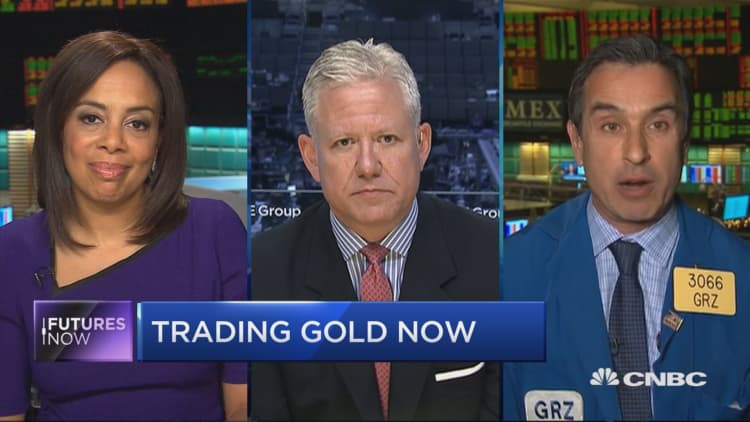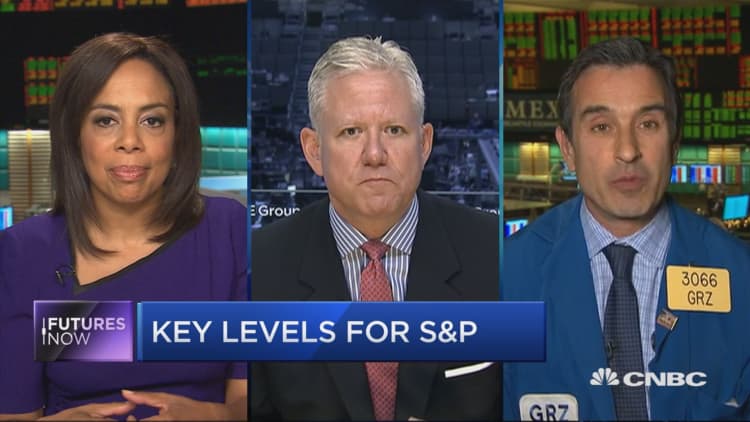


As gold continues to rally in 2016, one of Wall Street's most closely followed commodities watchers says we could be in the early days of a historic rally for the precious metal.
However, the catalyst for gold's gains could stem from a nerve-wracking sequence of events.
"We should expect the next global financial panic soon," said Jim Rickards on CNBC's "Futures Now" last week. "We have imploded twice in the last 16 years so get ready for the third one."
Rickards has penned numerous New York Times best sellers on the relationship between commodities and currencies. His latest book, "The New Case for Gold," defends the rationale that gold always has been, and always will be, a true safe haven during volatile times. He therefore urges investors to think of the commodity as insurance, not an investment.
He cited the financial meltdown of 2008, where U.S. banks teetered on the brink of collapse before the government's multi-billion dollar bailout. Before that, in 1998, Wall Street bailed out Long-Term Capital Management when it collapsed.
Rickards explained that, given the consistency of a financial panic every 10 years, investors should brace for another disaster in 2018. Yet, this time around, Rickards believes that its the U.S. government itself that may trigger the next crisis.
"In 2018, who's going to bail out the Central Banks?" asked Rickards. "The bailout money is going to come from the IMF [International Monetary Fund] as they have the only clean balance sheet left."
This occurrence, Rickards believes, will drive gold higher—to $10,000, to be exact. That eye-popping sum "is not a made up number," Rickards insisted. "It is the implied non-deflationary price," he reasoned.
Rickards referred to "M1," the base money supply printed by the Federal Reserve plus active checking accounts. The value of M1 is derived in large part from the value of gold and represents the day-to-day money supply that people can use to spend.
"Global M1 has about 40 percent gold backing. There's about 35,000 tons of official gold on the world. That comes out to about $10,000 an ounce to use gold to create confidence in the dollar," explained Rickards. "The dollar price of gold moves around, but gold itself stays constant."
Rickards' scenario, of course, is a hypothetical value based on a number of theoretical occurrences that would need to happen in the global economy. Bullion remains on a three-week winning streak, but it's a far cry from the levels predicted by the analyst. On Friday, gold ended trading around $1,278 an ounce.
"A weak dollar equals a higher price for gold, strong dollar equals a lower price for gold," said Rickards, who sees the currency trending much lower in the next 6-12 months as a result of the Fed easing up on liquidity rather than the tightening markets are trying to predict.
In fact, he hypothesized that a global dollar shortage should encourage the Fed to avoid raising rates in 2016.
Additionally, things stand to get worse if global conflicts continue unabated. Rickards referenced the 1933 Banking Crisis, when President Roosevelt closed every U.S. bank following instability that stemmed from the Great Depression. He also noted when the New York Stock Exchange was closed for 5 months during World War I. During this time, Rickards explained that European investors sold off their stocks and invested heavily in gold.
Rickards believes that war today could lead to a similar result in years to come.
"Look at the South China Sea! Look at the Middle East, Libya and Iran," Rickards said, citing global hot spots where tensions are at at a peak. "The system is not stable. "



